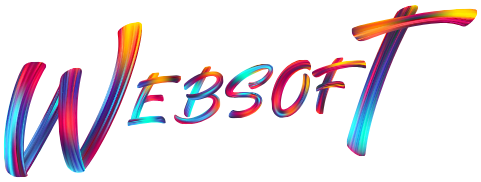When you think of graphic design, your mind might jump straight to logos, websites, or maybe even social media posts. But it’s more than just making things look “good.” Graphic design is an art that tells stories, conveys messages, and creates connections. It’s everywhere, from the packaging on your favorite snack to the app you use to keep in touch with friends. Let’s dive into what makes graphic design so powerful.
What Is Graphic Design Really About?
At its core, graphic design is the visual communication of ideas. It’s about translating concepts, messages, and emotions into images, typography, and colors. Whether it’s branding, advertising, or user interface design, graphic design is there to make sure everything looks cohesive and communicates clearly.
Graphic designers mix creativity with technical skills. They use tools like Adobe Photoshop, Illustrator, and InDesign to create designs that are not only visually striking but also purposeful.

The Role of a Graphic Designer: The Creative Problem Solver
Graphic designers aren’t just artists; they are problem solvers. When businesses need to stand out, or when a nonprofit needs to reach a wider audience, a designer is there to help craft a solution. The role isn’t just about making something look good; it’s about making sure it works—visually and functionally.
Think about it: a logo or an ad needs to catch your eye, convey a message, and stick with you. A good graphic designer understands the psychology behind design choices—colors, shapes, and even fonts can influence how you feel about a brand or product.
Why Graphics Matter in Today’s Digital World
In our digital age, we’re bombarded with information all the time. So, what catches our attention? Great graphics! From your Instagram feed to online ads, graphic design plays a huge role in how businesses communicate with their audience. In fact, studies show that people process visual information faster than text—meaning good design is key to making an impression.
Whether it’s an eye-catching logo or a stunning website design, graphics help brands stand out in a crowded marketplace. It’s not just about being seen, but about making a memorable impact.
The Elements of Graphic Design: What’s Behind the Magic?
Graphic design isn’t just about throwing pretty images together. It’s about creating harmony between various elements. Here are the core ingredients:
- Color: Colors evoke emotions and can change the perception of a brand. A warm palette might evoke comfort, while bright, bold colors scream energy and excitement.
- Typography: Fonts can say a lot about a brand’s personality. A sleek, modern typeface might suggest professionalism, while a handwritten script gives off a more personal, approachable vibe.
- Layout: The way everything is arranged affects readability and overall aesthetic. A clean, well-organized layout guides the viewer’s eye and makes content more digestible.
- Imagery: Photos, illustrations, and icons add personality and context. Good imagery makes the design feel alive and relatable.
- Whitespace: Space isn’t just empty—it’s a design element. Whitespace allows for balance and helps your design breathe. It keeps everything from feeling cluttered and chaotic.
Why Every Business Needs Graphic Design
Whether you’re running a small startup or managing a large corporation, graphic design is key to shaping your brand’s identity. A strong visual presence builds trust and recognition. Consider the iconic Apple logo—simple, clean, and instantly recognizable. It’s the power of design at work!
But it’s not just about logos. Design touches every part of your business: your website, social media, business cards, product packaging, and even email campaigns. Great design isn’t just about attracting attention; it’s about building an emotional connection with your audience. The right design can make customers feel confident, excited, or inspired to take action.
Tools of the Trade: What Do Graphic Designers Use?
Graphic designers have a toolbox full of software and tools that help bring their ideas to life. Some of the most popular ones include:
- Adobe Photoshop: The go-to for image editing and digital artwork.
- Adobe Illustrator: Perfect for creating vector-based designs like logos and icons.
- Canva: A user-friendly, web-based platform that’s great for non-designers looking to create simple graphics.
- Sketch/Figma: These are favorite tools for web and UI/UX design. They’re all about creating interactive, user-centered designs.
The Future of Graphic Design: Where Is It Headed?
As technology evolves, so does graphic design. One exciting development is the rise of 3D design and motion graphics. With advancements in AR (augmented reality) and VR (virtual reality), designers are now creating immersive experiences that go far beyond traditional 2D design.
Another trend? AI-powered design tools are starting to shape how designers work, making processes faster and more efficient. But even with these tech advances, the human touch will always be essential. Design is about empathy—understanding the needs of your audience and delivering something that resonates.
Final Thoughts: Design for Impact
At the end of the day, graphic design is about more than just making things look good. It’s about creating something that communicates, connects, and evokes emotions. Whether you’re a designer or someone looking to understand the value of design, remember: good design has the power to change the way people think, feel, and act.
What do you think? Does graphic design feel a bit more magical now?
Ask ChatGPTAttach
Search


